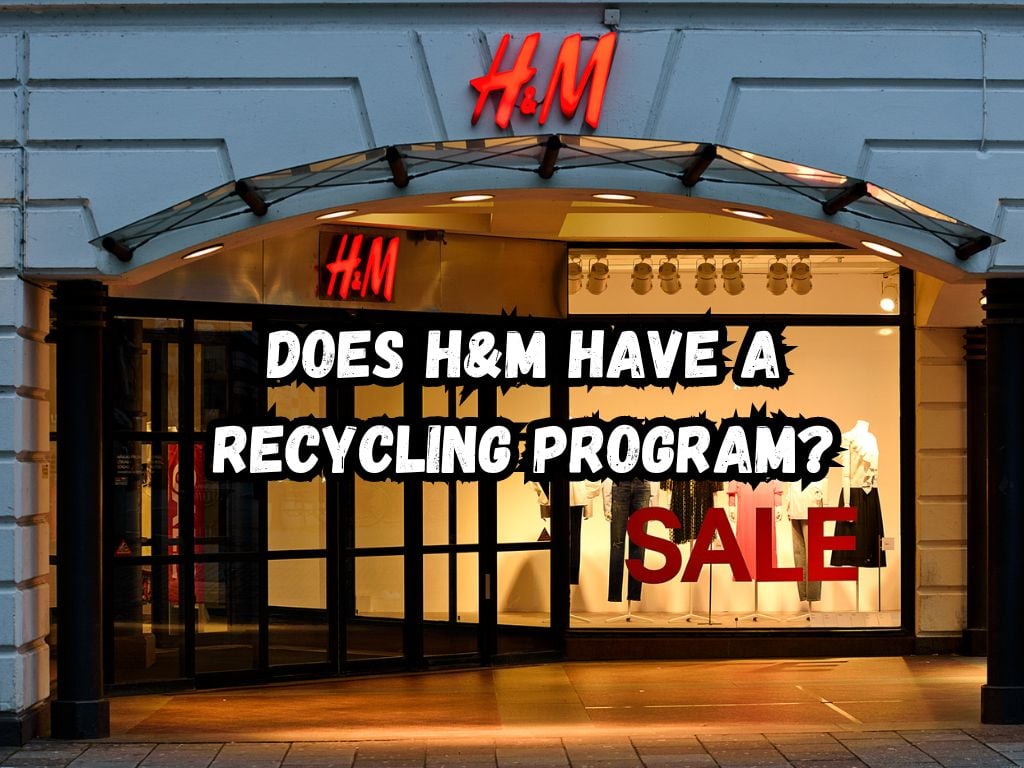Recycling plays a crucial role in the fashion industry’s journey toward sustainability.
But, does H&M have a recycling program?
As consumers become more conscious of the environmental impact of their clothing choices, fashion brands like H&M have stepped up their efforts to implement recycling programs.
In this article, we will delve into H&M’s recycling program, examining how the global fashion giant promotes sustainability through its initiatives.
Understanding H&M’s Approach to Sustainability
Before we dive into H&M’s recycling program, it’s important to understand the brand’s overall commitment to sustainability.
H&M has been actively working towards reducing its environmental impact and adopting more sustainable practices. The company recognizes the need to address the environmental challenges associated with the fashion industry and aims to be a leader in sustainable fashion.
H&M has launched its Conscious Collection to promote sustainable fashion choices. With this collection, the brand focuses on using organic and recycled materials, reducing water consumption, and adopting ethical manufacturing practices.
By offering sustainable options to consumers, H&M provides alternatives that align with their values.

Does H&M have a recycling program?
H&M’s recycling program, known as the “Take Care” initiative, is an integral part of the brand’s efforts to promote sustainability.
The program encourages customers to bring their unwanted clothing items, regardless of brand or condition, to any H&M store for recycling.
This initiative aims to reduce textile waste and extend the lifespan of clothing items.
When customers bring their clothes to an H&M store, the items are sorted into two categories: re-wear and recycle.
Wearable items are sorted for donation or resale, while non-wearable items are recycled.
H&M’s partnership with recycling companies allows them to transform these non-wearable items into new materials and products.
The “Take Care” initiative promotes a circular economy, where materials are reused rather than discarded.
By recycling textile waste, H&M reduces the need for virgin materials in its production, ultimately minimizing the environmental impact associated with resource extraction and manufacturing.
The Bring It Campaign: Encouraging Recycling
To encourage consumers to participate in the recycling program, H&M launched the “Bring It” campaign.
This campaign aims to raise awareness about the importance of recycling and motivates customers to take action.
As part of the campaign, H&M provides accessible collection points in their stores, making it convenient for customers to bring in their unwanted clothing items.
The “Bring It” campaign utilizes various channels, including social media, in-store signage, and collaborations with influencers.
By leveraging their brand reach, H&M effectively spreads the message of recycling and encourages customers to be mindful of the environmental impact of their fashion choices.
Impact and Achievements
H&M’s recycling program has had a significant environmental impact. By recycling textiles, the company has managed to reduce the amount of clothing items that end up in landfills.
According to H&M’s annual sustainability report, in 2020 alone, H&M collected over 29,000 tons of textiles for recycling, which equals to approximately 145 million t-shirts.
The success of H&M’s recycling program has not gone unnoticed. The brand has received recognition from various organizations for its sustainability efforts.
In 2020, H&M was ranked first in the Fashion Revolution’s Fashion Revolution Week Brand Rating report, highlighting the brand’s commitment to transparency and sustainability.
Through its recycling program and broader sustainability initiatives, H&M aims to inspire other fashion brands to follow suit.
By sharing their achievements and best practices, H&M actively contributes to the fashion industry’s collective effort to reduce waste and protect the environment.

Frequently Asked Questions
What types of items can be recycled at H&M?
At H&M, customers can recycle any clothing items, regardless of brand or condition. This includes garments, shoes, and accessories. By accepting items from any brand, H&M encourages customers to recycle irrespective of their purchase history, ensuring maximum participation in the program.
Are there any incentives for recycling at H&M?
While H&M does not provide direct incentives for recycling, the brand aims to make recycling easier by providing accessible collection points in their stores. By offering convenient drop-off options, H&M ensures that customers can effortlessly participate in the recycling program without any added costs or effort.
How can customers participate in H&M’s recycling program?
Customers can participate in H&M’s recycling program by bringing their unwanted clothing items to any H&M store and placing them in designated collection bins. H&M has made this process simple and accessible, allowing individuals to get involved in sustainable practices without extensive research or additional steps.
What does H&M do with the recycled materials?
H&M has partnerships with recycling companies that process the non-wearable items collected through the recycling program. The materials go through a sorting process to separate textile fibers from other components, such as zippers. The textile fibers are then reused as raw materials for new H&M products or transformed into other products such as insulation materials or cleaning cloths.
Conclusion
H&M’s recycling program is an essential component of the brand’s commitment to sustainability. By encouraging customers to recycle their unwanted clothing items, H&M reduces textile waste and contributes to a more circular fashion economy.
Through initiatives like the “Take Care” program and the “Bring It” campaign, H&M empowers consumers to make more conscious choices and play an active role in minimizing the fashion industry’s environmental impact.
By prioritizing recycling and sustainability, H&M sets an example for other fashion brands to follow, ultimately driving the fashion industry towards a more sustainable future.
As H&M continues to expand and refine its recycling program, it solidifies its position as a leader in sustainable fashion and reinforces its commitment to creating a more environmentally conscious industry.


 Tags:
Tags:










